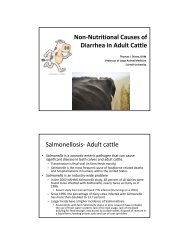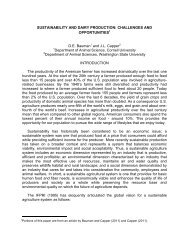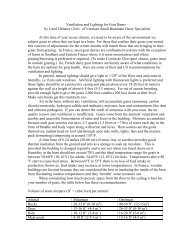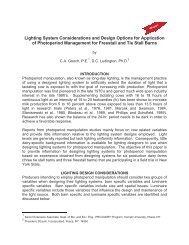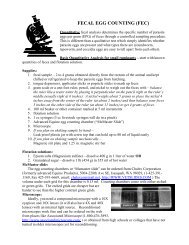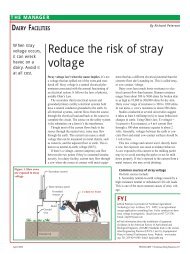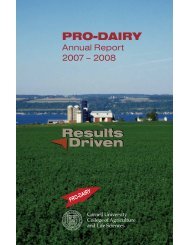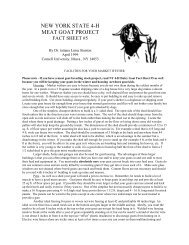1 GOAT SEMEN COLLECTION AND PROCESSING BY DR. LOUIS ...
1 GOAT SEMEN COLLECTION AND PROCESSING BY DR. LOUIS ...
1 GOAT SEMEN COLLECTION AND PROCESSING BY DR. LOUIS ...
You also want an ePaper? Increase the reach of your titles
YUMPU automatically turns print PDFs into web optimized ePapers that Google loves.
The color and consistency are often, but not always, a function of concentration.<br />
With some practice, an experienced person can "guess" the sperm cell concentration with<br />
some degree of accuracy just by looking at an ejaculate. Of course, such guesses are just<br />
an approximation and should never be used for serious evaluation purposes.<br />
Assessing the viability is a much more difficult task. It takes training and usually<br />
some sophisticated laboratory equipment. The problem is compounded by the fact that<br />
reproductive physiologists still have not precisely defined the characteristics that define a<br />
fertile sperm cell. It is known that viable sperm are capable of swimming in a straight-<br />
forward direction (progressive motility), and have an intact sack of enzymes (acrosome)<br />
surrounding the top of the head, utilize nutrients from dilutors and secrete waste products<br />
(metabolize) that may alter the pH of the dilutor, and have a characteristic normal shape<br />
(morphology).<br />
CONCENTRATION:<br />
The accurate measurement of semen is important when semen is to be used in<br />
artificial insemination or processed for freezing. The concentration of buck sperm reported<br />
to be necessary for a satisfactory fertilization rate is 40 million sperm per ml when fresh<br />
semen is used and 120 million motile sperm when frozen semen is used (Corteel, 1975).<br />
However, personal experience has indicated that much fewer cells are required if semen is<br />
of good quality and AI procedures are proper. Semen put up at a concentration of 120<br />
million or 60 million per 0.5 cc straw and having a 50% post-thaw survival rate yielded<br />
suitable fertilization. This is of course subject to animal variation and I would suggest using<br />
the higher concentrations unless semen from individuals are field tested for fertility versus<br />
concentration. The concentration of sperm in a sample can be determined by the use of a<br />
28



